First of a series of articles in which we answer frequently asked questions. In this article: What is the difference between a flat and sharp note?
Have you ever played a scale on your instrument? Practicing scales is a common way to get control over your instrument. But do you know the theory behind those scales? In this article I will tell you everything about scales. What defines a scale and how are they build?
A scale consists of seven different notes, ascending or descending. The first note lends it's name to the scale. De final (eighth) note is the same as the first one. Together they form a perfect octave. There are many different scales. In this article I will tell you a bit about the major and minor scales. We will also take a look at the harmonic and medolic variants of the minor scale.
The major scale is a diatonic scale. This means that it consists of whole and half steps. Let's start of by taking a look at the C major scale. This is probably the easiest major scale, because it has no flats or sharps.
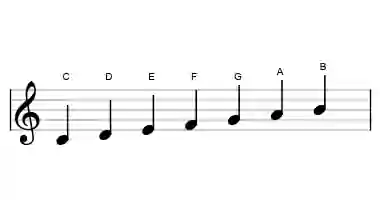
What makes a scale major? It is all about the gap between the notes. Between the different notes of C-major there's 1 - 1 - 0,5 - 1 - 1 -0,5 distance. To make this more understandable we can take a look at the piano below:

Every black key is a sharp/flat. But as you can see, there are no black keys between E and F, and B and C. This means that the distance between E and F, and B and C is only a half step.
Tip: When you see a black key between two notes on the piano, this means that the distance is a whole step.
If you know the steps of a scale, you can easily build them from any tonic. Take a look at the G-major scale:
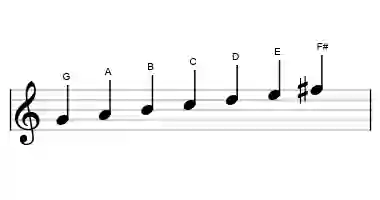
The scale has one sharp. This is important, because the distance between the last two notes should be a half step.
Let's take a look at the minor scale. This is the A-minor scale:
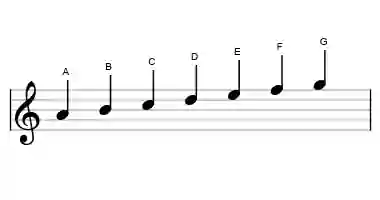
The minor scale is build with half steps and whole steps, like this: 1 - 0,5 - 1 - 0,5 - 1 - 1. This way we form a minor scale.
A minor scale sounds a bit sad. There's 1,5 tone distance between the first en the tirth note of the scale. This is the minor third interval. In a major scale you see a bigger distance between the first and thirth tone, a distance of 2. This is the major third interval. So a major scale can sound a bit fuller and more logical than a minor scale.
There are many scales and I will not get in to the super complicated once. But I do want to talk about the harmonic and medolic variation.
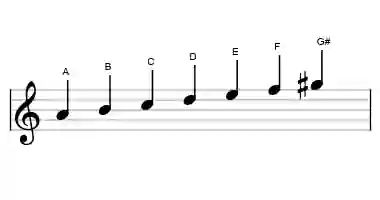
Once again we can take a look at the A minor scale, but there's a difference. This is the harmonic variant. The last tone ascends with one semitone (half step), which turns G into G#.
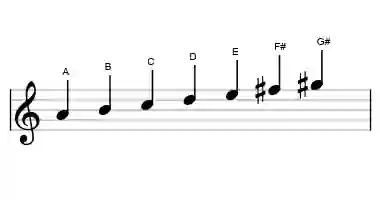
In a melodic minor scale the last to notes ascend. This turns F into F# and G into G#. It gives a whole different sound and feel to the scale.
Want to learn more? For more information about the major scales, take a look on this page.
Extra information about the minor scales is available on this page.
First of a series of articles in which we answer frequently asked questions. In this article: What is the difference between a flat and sharp note?
First of a series of videos to explain music theory in small chunks of information. Today part 1 - Naturals.
A series of videos to explain music theory in small chunks of information. Today part 2 - Sharp
A series of videos to explain music theory in small chunks of information. Today Part 3 - Flat